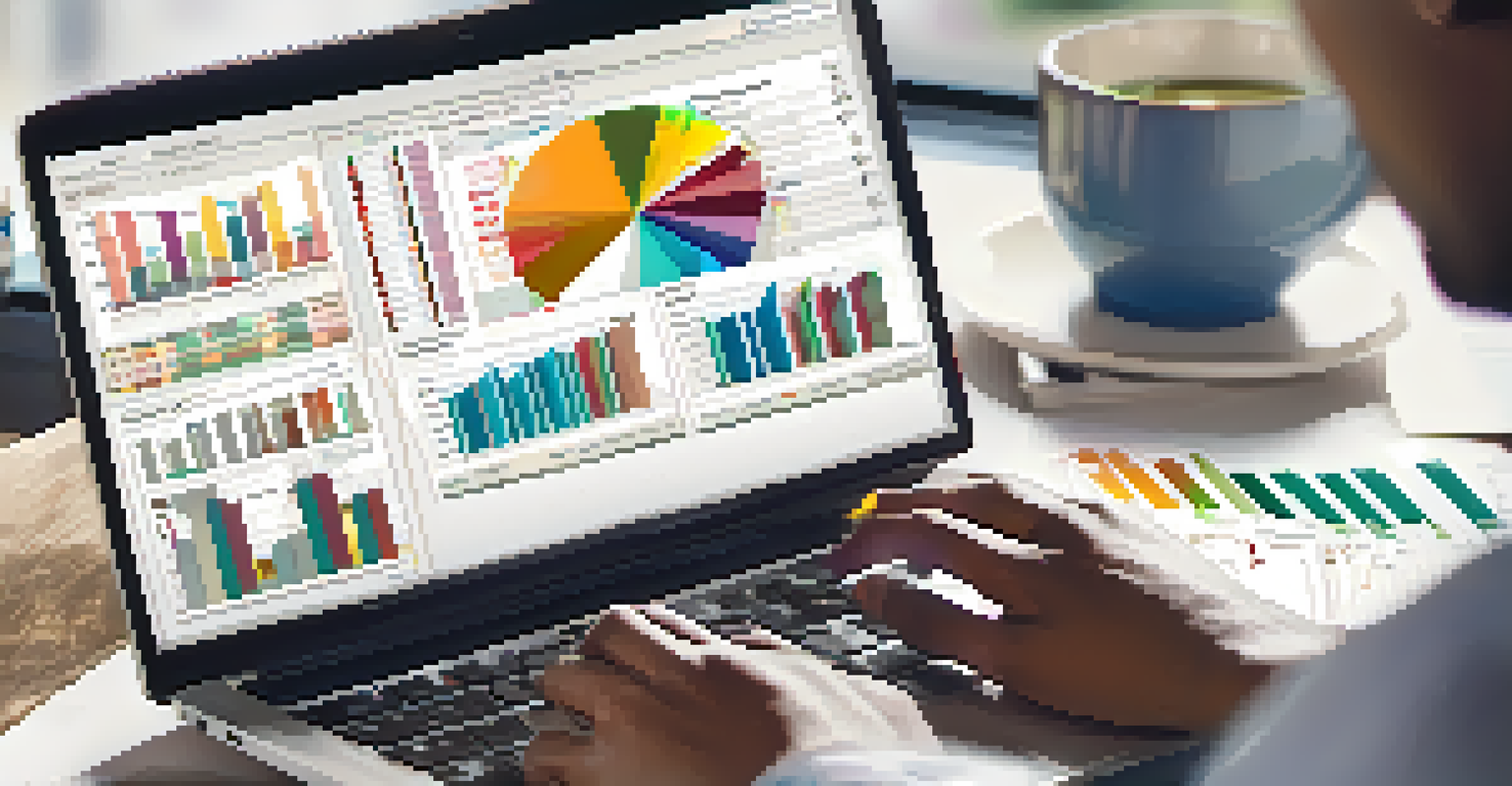Utilizing Forecasting Tools for Accurate Financial Predictions

Understanding the Importance of Financial Forecasting
Financial forecasting is a vital practice that helps businesses predict future revenue and expenses. By analyzing historical data and market trends, companies can make informed decisions about their financial future. Imagine planning a road trip without a map; financial forecasting serves as that essential guide, steering your business in the right direction.
Without data, you're just another person with an opinion.
Accurate forecasts enable businesses to allocate resources efficiently and prepare for potential challenges. For instance, if a company anticipates a decline in sales during a specific season, it can adjust its inventory and marketing strategies accordingly. This proactive approach not only minimizes risks but also maximizes opportunities for growth.
Ultimately, effective financial forecasting builds confidence among stakeholders and investors. When they see a well-thought-out financial plan supported by data, they are more likely to invest and support your business. In essence, accurate forecasts are the bedrock of financial stability and growth.
Types of Forecasting Tools Available
There are several forecasting tools available, each catering to different business needs and objectives. Some popular options include quantitative methods like time series analysis, which uses historical data to predict future trends. Other tools, like qualitative forecasting, rely on expert opinions and market research, making them valuable for startups or businesses entering new markets.

Software solutions also play a crucial role in financial forecasting. Programs like QuickBooks and Microsoft Excel offer templates and features to help businesses analyze their financial data effectively. By leveraging these tools, companies can streamline their forecasting process and minimize errors, much like using a calculator to ensure math accuracy.
Financial Forecasting is Essential
It serves as a crucial guide for businesses to predict future revenue and expenses, enabling informed decision-making.
Additionally, advanced technologies such as artificial intelligence and machine learning are transforming how businesses forecast. These tools analyze vast amounts of data in real time, providing insights that human analysts might miss. As these technologies continue to evolve, they hold the potential to revolutionize financial forecasting, making it more precise and actionable.
Choosing the Right Forecasting Tool for Your Business
Selecting the right forecasting tool is crucial for accurate predictions and successful financial planning. Start by assessing your business size, industry, and specific forecasting needs. For example, a small startup may benefit from a simple spreadsheet model, while a large corporation might require a more complex software solution that integrates with their existing systems.
The essence of strategy is choosing what not to do.
It's also essential to consider the learning curve associated with each tool. Some applications are user-friendly and require minimal training, whereas others may have a steep learning curve. Opting for a tool that aligns with your team's technical skills can enhance adoption and overall effectiveness, making the transition smoother.
Lastly, don't forget to evaluate the cost of each forecasting tool. While some solutions may seem appealing, they could stretch your budget unnecessarily. Look for tools that offer a good balance between cost and functionality, ensuring you get the best value for your investment.
Integrating Forecasting Tools into Your Workflow
Integrating forecasting tools into your existing workflow can seem daunting, but it doesn't have to be. Start by introducing the tool gradually, allowing your team to familiarize themselves with its features and functionalities. This gradual approach can help ease any resistance to change and encourage buy-in from team members.
Regular training sessions can also boost confidence and proficiency in using the forecasting tool. Consider hosting workshops or webinars that focus on best practices and tips for maximizing the tool's potential. Just like learning to ride a bike, practice and guidance can make all the difference in mastering a new skill.
Choose the Right Tools Wisely
Selecting appropriate forecasting tools based on business size and needs is key to achieving accurate financial predictions.
Finally, consistently review and refine your forecasting process. As your business evolves, so too should your forecasting methods. By staying flexible and open to change, you can ensure that your financial predictions remain accurate and relevant, ultimately driving your business towards success.
Common Mistakes in Financial Forecasting
Even with the best forecasting tools, businesses can make mistakes that lead to inaccurate predictions. One common pitfall is relying too heavily on historical data without considering external factors that may affect future performance. For instance, a sudden market shift or economic downturn can render past trends irrelevant, so it's essential to stay informed about current events.
Another mistake is underestimating the importance of regular updates. Financial forecasting is not a one-time task; it requires ongoing adjustments based on new information. Just like a gardener regularly tends to their plants, businesses should nurture their forecasts by incorporating the latest data and insights.
Lastly, be cautious about over-complicating your forecasting model. While it might be tempting to include numerous variables and intricate calculations, simpler models often yield clearer insights. Strive for a balance between accuracy and simplicity, ensuring your forecasts are both actionable and easy to understand.
The Role of Data in Financial Forecasting
Data is the backbone of effective financial forecasting. High-quality, relevant data enables businesses to make informed predictions about their financial future. Think of it like a chef needing fresh ingredients to create a delicious dish; without good data, your forecasts may fall flat.
In today's digital age, businesses have access to a wealth of data from various sources, including sales records, market trends, and customer behavior. By harnessing this information, companies can identify patterns and trends that inform their forecasting efforts. The more comprehensive your data collection, the more accurate your predictions are likely to be.
Data Drives Forecast Accuracy
High-quality data is vital for effective forecasting, allowing businesses to uncover patterns that inform future financial outcomes.
Moreover, integrating data analytics into your forecasting process can further enhance accuracy. Using analytics tools allows businesses to uncover hidden insights and correlations, leading to more robust forecasts. This data-driven approach is akin to having a trusty compass that guides you toward your financial goals with confidence.
Measuring the Success of Your Financial Forecasts
Once you've implemented forecasting tools, measuring their success is crucial to ensuring continuous improvement. Start by comparing your forecasts against actual financial results to assess accuracy. This evaluation serves as a reality check, highlighting areas where your predictions were spot-on and where adjustments may be needed.
Additionally, gather feedback from your team regarding the forecasting process. Understanding their experiences can provide valuable insights into the tool's usability and effectiveness. Much like a team debrief after a project, this feedback loop fosters collaboration and helps identify opportunities for growth.

Finally, set specific key performance indicators (KPIs) related to your financial forecasts. Monitoring these KPIs can help you track progress over time and ensure that your forecasting efforts align with your overall business goals. By measuring success, you can refine your approach and enhance the accuracy of your financial predictions.